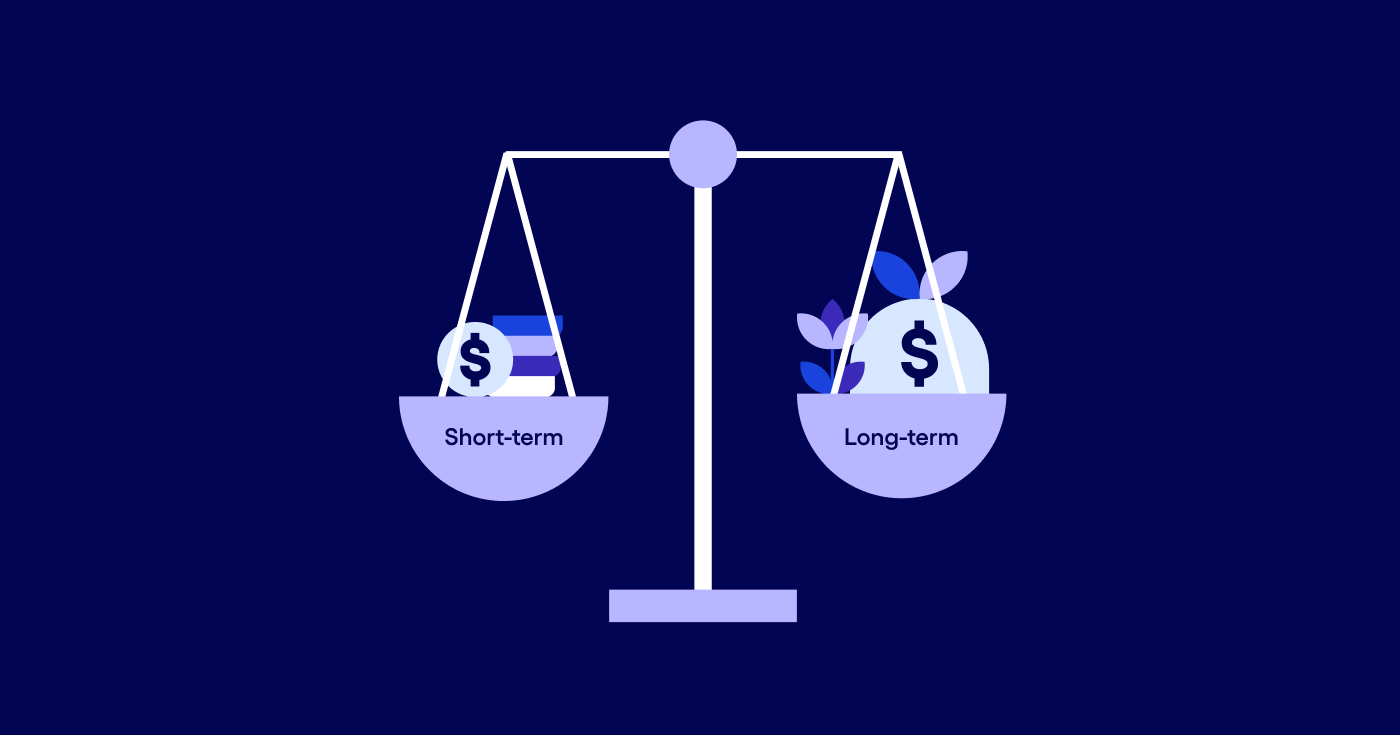The Difference Between Short-Term and Long-Term Small Business Loans

What Are Short-Term Business Loans?
Short-term loans are intended to be returned quickly, usually within three to eighteen months. These loans provide fast access to smaller amounts of capital, usually ranging from $5,000 to $500,000.
Think of them as business credit cards or emergency funds—they're meant to solve immediate problems or capture quick opportunities, not fund major long-term investments.
What Are Long-Term Business Loans?
Long-term loans stretch repayment over several years, typically 2 to 10 years or even longer. They provide larger amounts of capital, often $50,000 to several million dollars, depending on your business size and creditworthiness.
These loans are like mortgages for your business—designed for major investments that will benefit your company for years to come.
Key Differences at a Glance
Repayment Period: Short-term loans must be repaid within months, while long-term loans give you years to pay back the money.
Loan Amounts: Short-term loans are typically smaller, while long-term loans can provide substantial capital for major investments.
Interest Rates: Short-term loans often have higher rates but less total interest paid due to the shorter period. Long-term loans may have lower rates but more total interest over time.
Approval Speed: Short-term loans can be approved in days or even hours, while long-term loans may take weeks or months.
When to Choose Short-Term Loans
Short-term financing works best for immediate needs that will generate quick returns. If you need to buy inventory for a busy season, bridge a temporary cash flow gap, or take advantage of a time-sensitive opportunity, short-term loans make sense.
For example, a restaurant might use a short-term loan to stock up before a holiday rush, knowing they'll repay it from increased sales within a few months.
These loans also work well when you need money fast and don't want to go through lengthy application processes.
When to Choose Long-Term Loans
Long-term loans are ideal for major investments that will benefit your business over many years. Buying real estate, purchasing expensive equipment, expanding to new locations, or funding major renovations all justify longer repayment periods.
A manufacturing company buying new machinery that will last 10 years should use a long-term loan rather than straining cash flow with short-term payments.
Long-term loans also make sense when you want predictable, manageable monthly payments that won't stress your cash flow.
Cost Considerations
Short-term loans typically have higher annual interest rates, sometimes 15-50% or more. However, because you repay them quickly, the total interest paid is often less than long-term loans.
Long-term loans usually offer lower annual rates, perhaps 6-15%, but you pay interest for many years. A $100,000 loan at 8% over 5 years costs about $21,000 in total interest.
Factor in all costs, including origination fees, which can be significant for short-term loans.
Cash Flow Impact
Short-term loans create higher monthly payments that can strain cash flow but free you from debt obligations quickly. Make sure your business can handle the payment pressure without hurting operations.
Long-term loans spread payments over time, making them easier to manage monthly but creating long-term financial commitments. This predictability helps with budgeting but reduces financial flexibility.
Approval Requirements
Short-term lenders often have more relaxed requirements. They may accept lower credit scores and less documentation, focusing more on your business's recent performance and cash flow.
Long-term lenders typically want extensive documentation, strong credit scores, detailed business plans, and sometimes collateral. The approval process is more thorough but often results in better terms.
Flexibility and Features
Short-term loans are usually straightforward—you get money, and you pay it back quickly with interest. There's less room for negotiation on terms.
Long-term loans offer more flexibility. You might negotiate payment schedules, early repayment options, or seasonal adjustments that match your business cycles.
Making the Right Choice
Consider what you need the money for and how quickly it will generate returns. Quick-return investments like inventory or equipment that immediately boost revenue work well with short-term loans.
Long-term investments like real estate, major equipment, or business expansion that take time to pay off need long-term financing.
Also consider your cash flow. Can you handle high monthly payments, or do you need them spread out over time?
Hybrid Approaches
Some businesses use both types strategically. They might have a long-term loan for major equipment and use short-term loans for seasonal inventory needs.
Lines of credit offer another option—you can borrow short-term amounts as needed but have ongoing access to funds without reapplying each time.
Red Flags to Avoid
Be wary of short-term loans with extremely high rates (over 50% annually) unless it's truly an emergency. Some predatory lenders target desperate business owners.
For long-term loans, watch out for prepayment penalties that prevent you from paying off the loan early if your business does well.
Bottom Line
Short-term loans work best for immediate needs, quick opportunities, and situations where you can repay quickly from the loan's benefits. They are quick yet pricey, which can restrict cash flow.
Long-term loans suit major investments, expansion plans, and situations where you need manageable monthly payments. They take longer to get but offer more capital at lower rates.
Choose based on what you need the money for, how quickly it will generate returns, and what payment schedule your business can comfortably handle. The right choice depends on your specific situation, not just the loan terms.